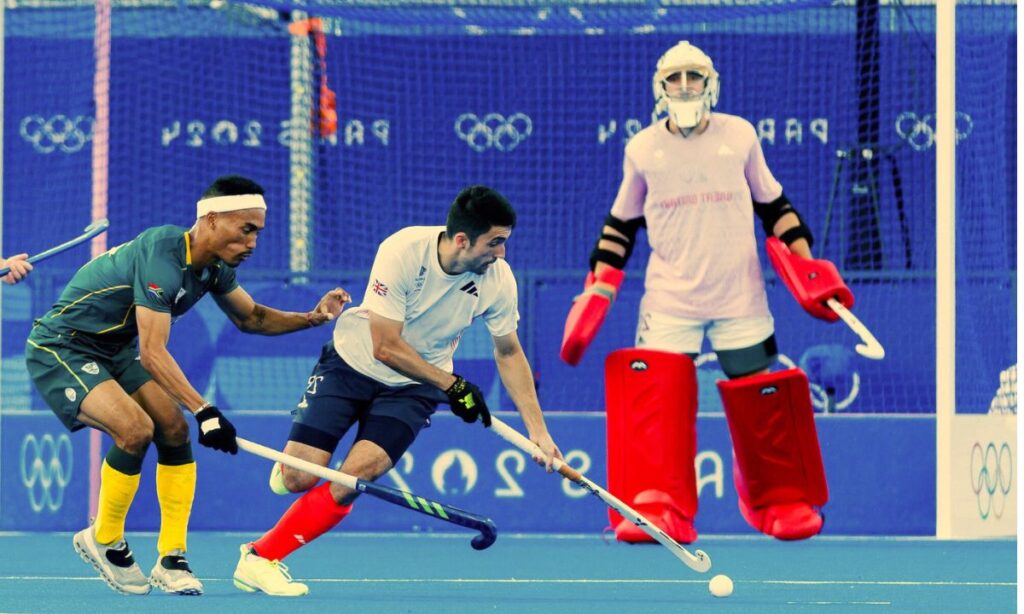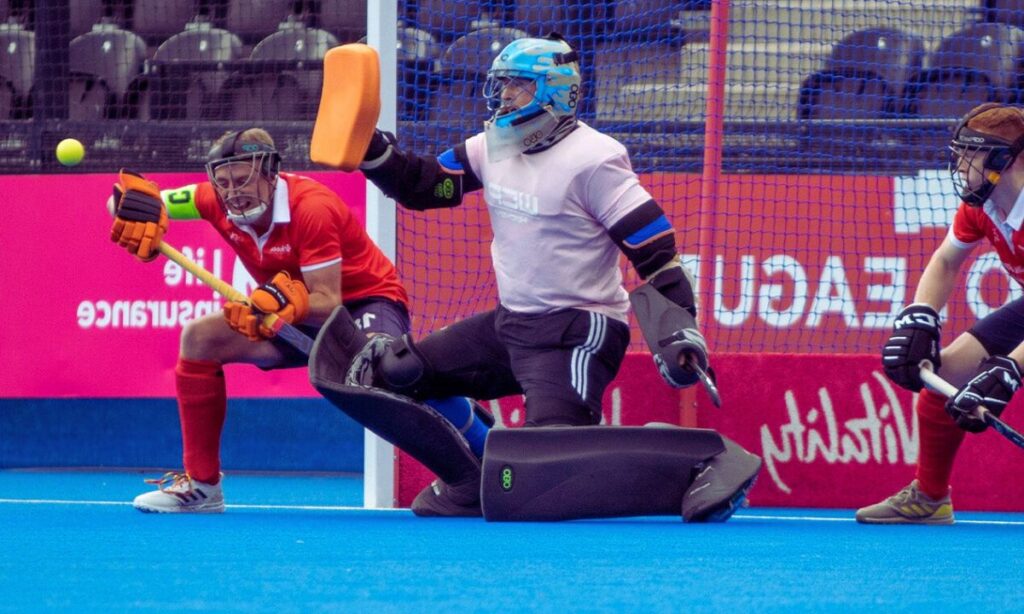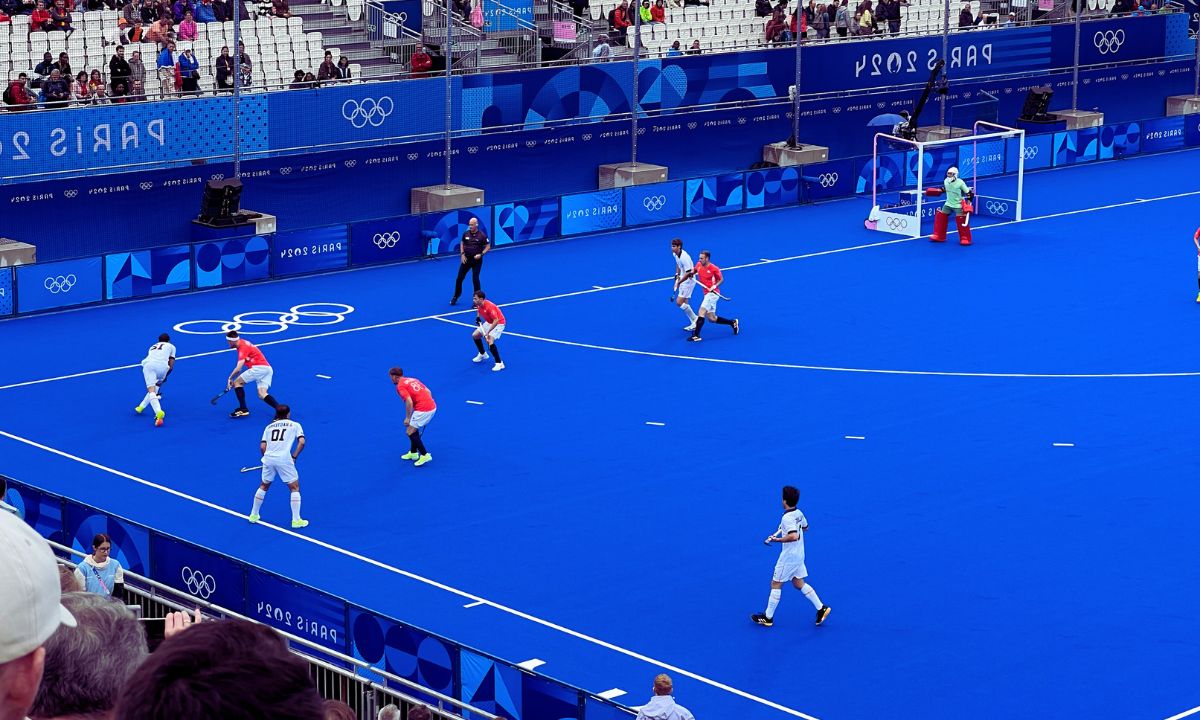Penalty corners can decide matches. Mastering penalty corner techniques in hockey isn’t just about raw power—it’s about timing, coordination and composure under pressure. When your team is awarded a short corner, everyone has a role: injector, stopper, striker, deflector. Getting the setup right can unlock scoring opportunities against even the best defenses. Understanding these techniques makes your team more dangerous and organized. In this guide, I’ll walk you through crucial skills—from injecting cleanly to executing powerful drag-flicks—with simple, step‑by‑step advice geared toward real players.
The Injector’s Role – The Critical First Touch
The injector starts every penalty corner play. Precision is essential: deliver the ball smoothly into the strike circle at the perfect height and pace. Too low, the stopper can’t control; too high, the striker can’t strike. Practice consistent board passing and aim for vanishing your motion. Communication with your stopping partner is crucial. A clean pass sets up everything else, making injector technique a foundation for success. Work on quick setup, steady grip and minimal telegraphing. That way your teammates can anticipate and move into position without hesitation.

The Stopper – Commanding the Ball
Once the injector releases the ball, the stopper must bring it under control in a flash. Good stoppers position themselves squarely between the injector and striker, with soft hands to absorb pace immediately. Body positioning is key—bend slightly, keep your stick low, and cushion the ball toward the striker’s hitting zone. Don’t panic under pressure. Practicing repeated repetitions builds muscle memory: stop, control, and pass seamlessly. A reliable stopper ensures the striker gets the best possible ball, making them a silent but vital part of successful penalty corner techniques in hockey.
The Striker – Scoring the Goal
Your striker’s timing is everything. As soon as the stopper controls the ball, the striker moves in for a powerful shot or drag flick. Foot placement, body lean and wrist snap all combine for precision. Choose your target—near post, top corner, or far side—based on goalkeeper position. Practice hitting against the goalie from different angles. A confident striker nails timing and direction consistently. In penalty corner techniques in hockey, striker training drills must emphasize balance, explosive motion, and rapid decision-making. Together with injector and stopper harmony, the striker delivers the finishing touch.
Drag Flick Technique – The Specialty Shot
Drag flicks are high‑velocity, low‑trajectory shots that can beat goalkeepers regularly. The mechanics: plant foot firmly, crouch low with hip rotation, then sling the ball forward while dragging your stick quickly under it. Wrist flex adds lift. Body alignment and foot positioning are critical—too upright and you lose speed. Consistent practice develops natural rhythm. Many teams count on drag flick specialists to convert penalty corners. By focusing on this advanced technique, players can elevate their team’s scoring potential, making penalty corner techniques in hockey even more potent.
Variation and Deception – Unpredictability Wins
Effective penalty corner techniques in hockey revolve around unpredictability. Injectors and strikers should vary their routine: sometimes go for a straight hit, other times a drag flick, or a delayed dummy move. Stopper timing and striker movement must adapt. Surprise plays—like delaying the striker or injecting to the far post—keep defenders guessing. This mix forces goalkeepers and defenders into hesitation. Rotating roles and practicing different patterns also builds flexibility. When defenders can’t predict your next move, your penalty corner execution becomes far more dangerous.
Defensive Insights – Countering Opposition Corners
Understanding penalty corner techniques in hockey also means knowing how to defend them. As a defender, watch the injector’s angle, stall the stopper’s time, and block the striker’s space. Close marking, quick recovery and shot blocking are critical. Goalkeepers and defenders train together to anticipate drag flick trajectories and cover runs. Knowing your own team’s setup helps predict opponents’ setup. Film study and communication are core. By appreciating both offensive and defensive tactics, teams can minimize conceding from penalty corners and prepare strategies to shut down key injectors and flickers.
Real-Time Coordination
During live play, penalty corner techniques in hockey depend heavily on communication. Injector, stopper, and striker must sense each other’s movements. A quick hand signal or word helps launch the routine exactly when everyone is in position. Teams also use non-verbal cues—like foot stamps or stick taps—to coordinate without tipping defenders. Practicing communication methods in training ensures that, under pressure, all players act smoothly. This polished coordination removes hesitation and miscues, making penalty corners a clean, rehearsed unit rather than a chaotic scramble.
Practicing Under Pressure – Simulated Game Drills
One secret to mastering penalty corner techniques in hockey is training under pressure. Set up drills with defenders and goalkeepers to simulate real match situations. Add time constraints, noise, or limited player numbers to elevate stress. Score drills where success rates are tracked push players to refine delivery, timing, and precision. The more pressure you simulate, the more instinctive your execution becomes. When real matches get tense, your penalty corner routine will feel familiar, not forced. Consistency under duress is built in practice—not just on match day.
Fitness and Flexibility – Supporting Technique
Executing penalty corners effectively requires more than technique—it demands physical fitness. Injectors need upper-body coordination, stoppers require stability, and drag flickers rely on hip flexibility and leg power. Core strength helps maintain body alignment in dynamic positions. Regular stretching prevents stiffness in hips and wrists, crucial for flicking. Plyometric exercises improve explosive power. Including mobility work supports fluid technique. By training strength and flexibility alongside tactical drills, players ensure they can repeat inverting, stopping, flicking and hitting seamlessly over a long match or tournament.
Video Review – Fine-Tuning Technique
One practical way to improve penalty corner techniques in hockey is to record each attempt during practice or matches. Review injector delivery angles, stopper body positioning, tone timing, striker shot trajectory—every detail. Coaches and players can identify minor adjustments in stance, foot placement, or rhythm. Seeing your own movements helps fix inconsistencies that you can’t feel in real time. Use slow-motion playback to understand what went wrong and why. Over time, this feedback loop refines habits and builds a preferred routine that works under any pressure.
Team Roles and Individual Specialisation
Successful penalty corner execution comes from assigning roles based on individual strengths. Pick injectors with accurate passing abilities, stoppers who calmly control pace, drag flick specialists with strong wrists. Every player should focus on their role until it becomes second nature. Rotate roles in training to build depth, but keep your “A-team” for match play reliable and experienced. Having defined roles builds accountability. It also lets you capitalize on each player’s best skill, ensuring that during pressure situations, everyone knows their contribution in your penalty corner techniques in hockey system.
Adapting to Opponent Strategies
Different teams defend penalty corners in varied ways—some rush, some hold back. Study your next opponent’s defense during training. If they block early, consider slower injection or drag flick off the far side. If they rush the stopper, use dummy moves and inject quickly. Adjust strategies accordingly. Flexibility and awareness make your penalty corner techniques in hockey dynamic and unpredictable. Being one step ahead—knowing what the other side tends to do—gives you a tactical edge before play even starts.
Mental Preparation – Focus and Calm
Penalty corners often decide high‑stakes moments, so mental practice matters. Visualise your injector–stopper–striker sequence before it starts. Keep breathing steady, block out crowd noise. Confidence comes from preparation, not last-minute pep talks. Mental rehearsal ensures you stick to the routine even under pressure. Learning to stay calm when the match is on the line helps deliver clean execution. Mental toughness is as much part of penalty corner techniques in hockey as technical training. Practice composure and it will show in your matchday performance.
Mastering the Dummy Move
A dummy move is a clever trick used to mislead defenders during a penalty corner. Instead of striking or flicking the ball immediately, the striker may feint a hit, forcing defenders and the goalkeeper to commit early. This opens up space for a delayed flick or a pass to a waiting teammate. Perfecting the dummy move requires confidence and precise timing. It must be executed smoothly without hesitation. When done right, it creates confusion and can leave the defense scrambling, giving the attacking side a clear advantage during crucial scoring opportunities.
Second Phase Strategies
Not every penalty corner results in a goal on the first attempt. That’s where second phase play comes in. If the initial flick or hit is blocked, attackers must react quickly—regaining possession, passing, or taking a rebound shot. Positioning around the D becomes critical, and players must stay alert for loose balls. Rehearsing second phase scenarios in training helps players know exactly where to run and what options are available. Teams with strong second phase awareness often score from scrappy plays that catch defenders off guard after the initial set-piece.
Goalkeeper Reactions – Understanding Their Mindset
To beat the defense, it’s smart to understand how goalkeepers think during penalty corners. Keepers read the injector’s body language and anticipate likely flick directions. They often have pre-set moves, like diving toward the post or charging out. Strikers should study video footage to notice patterns. This insight allows attackers to plan their flicks or hits more strategically. Goalkeepers are quick, but a well-placed drag flick or a deceptive deflection can still beat them. Knowing their tendencies helps create smarter scoring chances under pressure.
Rebounds and Deflections – Seizing the Unexpected
Some of the best goals in penalty corners come from deflections or rebounds. A striker may aim a drag flick toward a teammate positioned at the far post for a touch-in. Or, the ball might bounce off a defender or goalkeeper, and an alert player can pounce on the opportunity. Practicing deflections sharpens reflexes and positioning. It also adds depth to the team’s attacking setup. These “dirty goals” may not be flashy, but they count just the same—and in tight matches, they’re often the difference between winning and losing.
Penalty Corner Protection Gear – Safety First
Penalty corners are fast and intense, which makes safety gear essential. Defenders wear protective masks, gloves, and body padding during corners to shield against high-speed balls. Even attackers wear mouthguards and shin pads. The stopper, who stands closest to the ball, must use a low and stable stance to protect themselves from mishits. Teams must prioritize safety by ensuring everyone wears the right equipment and knows how to position themselves to avoid injury. Safe players are confident players—and confidence improves performance during high-pressure corners.
Communication with Coaches – Off-Field Planning Matters
While execution happens on the field, much of the planning is done off the pitch with coaches. Analyzing opponent patterns, designing set plays, and assigning roles all come from detailed coaching input. During timeouts or breaks, coaches provide quick tactical changes based on how defenders are reacting. Keeping communication open between players and coaches builds trust and ensures each penalty corner is not only practiced but purposefully designed. Teams that work closely with their coaching staff often have more varied and effective corner routines.
Using the Push-Out Delay – A Surprise Element
Sometimes, a slight delay in pushing out the ball can throw off the defending team’s rhythm. Most defenders anticipate a quick injection, but if the injector waits half a second longer, it might cause early runners to mistime their rush, creating better shooting lanes. This technique, however, requires exceptional coordination—any mistiming could ruin the routine. Teams should only use push-out delays if they’ve practiced them thoroughly. When done right, this delay can give the striker just enough space and time to execute the perfect shot.
Developing a Signature Routine – Owning Your Style
Some teams develop a signature penalty corner routine—a unique pattern or move that they execute flawlessly. This might be a specific drag flick sequence, a fake-stop leading into a slip pass, or a double deflection. Signature routines are hard to defend when executed with speed and precision. The key is repetition and familiarity. Once every player knows their exact role and timing, the routine becomes a weapon. While it’s good to mix things up, having a go-to strategy that works more often than not gives teams confidence and control in crunch situations.
Practicing Under Weather Conditions – Real-World Readiness
Penalty corner techniques in hockey can vary depending on weather. A wet pitch can slow down injection speed, while wind can affect high drag flicks. Practicing under different conditions helps players adapt. Coaches should include sessions on rainy days or early mornings when dew is heavy. Understanding how the ball behaves under these conditions is vital. A team that knows how to adjust its timing and control based on pitch conditions is more likely to execute corners successfully in real match situations.
Building Trust Within the Unit – Cohesion Wins
The most successful penalty corner units aren’t just technically good—they trust each other. The injector believes the stopper will control it; the striker knows their teammate will deliver the ball perfectly. This kind of trust comes from consistent practice, open communication, and a shared understanding of each other’s playing style. It’s not built overnight. Teams must work together closely, support one another, and refine their chemistry. Once that trust is established, the unit becomes smooth, responsive, and unstoppable—even under the highest pressure.
Countering the Defense Rush – Beating the First Runners
During penalty corners, defenders sprint out from the goal line to block the shot. These “first runners” can disrupt plays if they reach the ball quickly. To counter this, attacking teams use smart tactics like quick flicks, disguised passes, or lifted shots. Timing becomes everything—if the striker hesitates, the chance is gone. Practicing under pressure with defenders charging out helps attackers stay composed and precise. Using a slip-pass or dummy move can outsmart the first runner and create better scoring angles. It’s about staying calm, reading the run, and adapting quickly to the situation.
Timing the Injection – Why Every Second Counts
The injection pass sets the rhythm for the entire penalty corner. A slow or mistimed push-out can break the momentum, while a fast and smooth one sets everything in motion. The injector needs a strong grip, a low body position, and clear eye contact with teammates. The best injectors also know when to slightly delay or speed up their pass to throw off defenders. Great injection is not just about power—it’s about accuracy and rhythm. When it’s perfect, it gives the stopper and flicker the best chance to convert under pressure.

Practicing With Pressure – Simulating Match Intensity
Penalty corners in training are often relaxed, but real-game pressure feels different. That’s why teams should simulate match-day pressure during practice. This includes noise, countdown timers, or friendly competitions between units. Creating a high-stakes environment improves focus, builds mental toughness, and makes the real thing feel less intimidating. It’s one thing to nail the routine in training—it’s another to execute it flawlessly in front of a crowd. Teams that simulate pressure consistently tend to perform better when it matters most.
Reading the Opponent’s Setup – Spotting Weaknesses
Every team defends penalty corners differently. Some crowd the post, others send two rushers, and a few rely on aggressive running lines. The attacking side must learn to read these defensive setups. By observing the positioning of the runners and goalkeeper, players can choose the best flick direction or pass. Experienced players and coaches often spot patterns and adapt in real-time. Studying opponents through match footage also helps design more effective routines. When attackers know what to expect, they gain a critical edge that often leads to goals.
Final Thoughts: Precision Through Practice
Penalty corner techniques in hockey are a blend of art and science. Perfect injector delivery, stopper control, powerful strikes, and deceptive variations all matter. Build routines through rigorous practice, communication, role assignment and mental prep. Study opponents to adjust tactics and record your moves to fine-tune details. Above all, coordinate your team’s execution until it becomes second nature. When you step onto the field, your penalty corner unit won’t just be rehearsed—it’ll be instinctive. Nail these elements and your team becomes a consistent scoring force in crucial moments.

